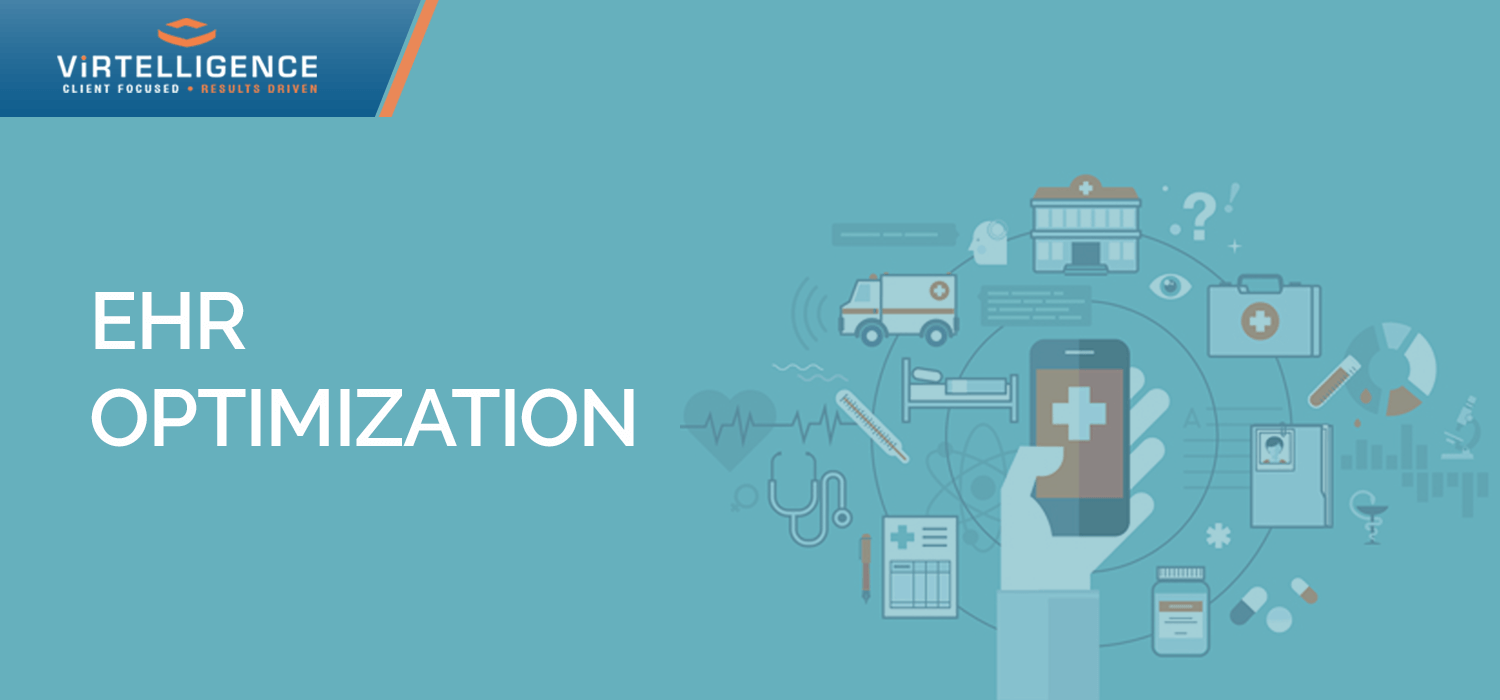
For every healthcare organization, it includes a lot of expeditiousness to get their EHR (electronic health record) systems up and going. It’s no bed of roses, but it’s worth it because it’s all been done. Wong notion! Sad to say, it’s just the start. Then, the real hard work or you can say EHR optimization begins, where, hospitals, health plans, physicians, and other healthcare providers must have to improve the software according to their own requirements, clinical productivity, and efficiency. Additionally, as stated by EHR Intelligence, “….the push for value-based care and reimbursement has raised new needs for EHR optimization among physicians.” Hence, even if you wish to stop at implementation, you will always need to upgrade, optimize, and enhance your level of EHR service and functionality as Medicare and other commercial payers shift to pay-for-value incentives.
EHR Optimization Challenges
According to a recent survey carried out by KPMG and CHIME (College of Healthcare Information Management Executives), “…38 percent of respondents accepted that EHR optimization is going to remain a top priority over the next three years.” Still, optimization is considered to be a thorn in the side of many healthcare executives.
A large number of healthcare organizations are going through optimization challenges which improve clinical and business processes, especially EHRs. Although integrated, cost-cutting, operationally effective solutions progress value and results, doctors and nurses find it difficult to modify EHR systems, as they are usually impervious to changes, indulge in treating the patients, dealing with burnout, and finding it almost impossible to constantly acquire new procedures. Moreover, conventional budgets make it quite difficult to have new upgrades and optimization.
For the purpose of introducing optimization, healthcare organizations can use outside services of firms like Epic or Cerner It Consulting firms to help in having cost-effective augmentation of the current technology they are using and assisting personnel to quickly learn to take advantage of the improvements.
7 Steps for a Smoother EHR Optimization
- Evaluate the value of your EHR technology: Delve deep and ask yourself detailed and explicit questions: Where are the chances for more value? How can our organization better adapt our EHR system to our exclusive organizational requirements? Is the technology right-sized to our expectations and organization? As a fair and objective evaluation of existing EHR technology can emphasize its competencies and shortages, the latter of which can assist as the target of EHR optimization efforts.
- Work with a reliable and trusted EHR advisor/partner: EHR optimization is always a collective struggle, both internally and externally. A crucial preliminary step for several healthcare organizations is to partner with an experienced EHR consultant. Select skilled senior-level experts from professional healthcare it consulting organization like Virtelligence, having more than 20 years track record with healthcare clients and are proficient to assist in a vast range of EHR systems, such as Epic, Cerner, Meditech, McKesson, Allscripts, eClinicalWorks and more. This established proficiency will assist you to quickly achieve maximum efficiency and ROI (return on investment).
- Engage Physicians: Involve the physicians as part of the process. Ask them to join as the optimization team. Find out what their pain points are, what are their expectations in the way of enhancements, and what they are certain of their patients’ expectations. This intrinsic participation can make the difference between physician burnout and physician satisfaction.
- Determine accurate EHR optimization objectives and opportunities: Setting realistic EHR optimization goals and opportunities significantly differ from simple to complex and from company to company. Most possibly, you just want to reduce the number of clicks, a mutual complaint with EHR users. You want to transfer the data into the system as easily as possible.
- Standardize your EHR system: Difficulties with EHR standardization can delay the achievement of primary care teams in the procedure of optimizing their EHR systems. This failure to implement standard use of health IT is representative of a bigger problem with implementing standardization across care settings.
- Address EHR data reporting needs: Whereas central reporting requirements are outside the domain of what healthcare organizations can adjust or expand during an EHR optimization project, they can do what they can to meet the needs by enhancing proficiency without growing the workload.
- Enhance EHR usability: Enhancing EHR usability includes addressing and improving the technical design and data presentation in more intuitive methods that make sense for the users.
EHR systems upgrades and optimization are crucial for enhancing the way your technology works. It’s just not a one-and-done system. Consistent evaluations, upgrades, and optimization are required to constantly reap the benefits of your EHR investment.
To have customized EHR technology needs you to be devoted to both the optimization and maintenance of the system, well beyond the early go-live. In reality, several system providers propose a key upgrade/optimization every 12 to 18 months to stay updated and help guarantee customer satisfaction with immaculate, proficient, and effective software solutions.